La Luna se hab’a olvidado de nosotros
The Moon had forgotten us
Doña Basilia, Huehuetenango
Recovering Historic Memory with Indigenous Women
Survivors of Sexual Violence in Guatemala
Claudia Bernardi
Doña Basilia said that when the army came to kill her husband, she was preparing tortillas, her son was at home and the moon was full.
It was a full moon, said Doña Basilia, tinting the sky with the waxy shadows of the men in fatigue uniforms. She could not detect whether they were army soldiers or guerrilla combatants. She could not tell. That is how confusing those times were. She did not know at the time who had come to kill them.
There was a full moon: “The moon had forgotten us”
Doña Basilia is one of thirty women, survivors of sexual violence during the Guatemalan armed conflict who congregated in Huehuetenango in August of 2008. Huehuetenango, located in the northern western region of Guatemala, is one step away from Mexico. It is a commonly transited area for those who are exiting El Salvador, Honduras, Guatemala, and who are determined to cross towards Mexico in their way to the US. The Cuchumatanes, the rocky high mountains, do not stop them. They may be delayed, they may be confused in their journey, but they are not stopped. They cannot stop at the Cuchumatanes. They can only go forward at all risks.
In August of 2008, ECAP (Equipo Comunitario de Asistencia Psicosocial/ Psychosocial Assistance Community Team) invited The School of Art and Open Studio of Perquin to work with 30 indigenous women survivors of sexual violence during the armed conflict. Claudia Verenice Flores Escolero, Rosa del Carmen Argueta, Rigoberto Rodriguez Martinez and I arrived to Guatemala City and from there we were taken to Huehuetenango. We arrived on Sunday. We started the mural on Monday.
The women came from far regions of Huehuetenango and beyond, bringing terrible stories of their past. They spoke Mam, Kaktchikel, Achy, and Canjobal. Their interpreters, diligently, translated their conversations. Although, most of the time, it was the body in its remarkable eloquence what transmitted us the pain, the guilt, the confusion that they all have accumulated and carried like a shadow made of stone.
The women participants of this project are community leaders. Most of them had opened cases of investigation against the men who committed crimes against them. Some of those men are mayors of their communities. This evidence places the women and their families in great danger. No “elected” mayor would like to confront charges as a rapist.
The women are determined to speak the truth. They explain that they are not without fear but that it is important for their daughters to know what happened to them. One of the first women to appear early on the morning of Monday had seen the murals we created last year and early in 2008 with survivors of massacres. She told me:
“We want to learn how to speak about the terrible things that happened to us with the beauty that you have taught us. We want to paint what we remember”
The first day was of presentations. We introduced one another, we shared ideas and talked about why we all were there, why had we been congregated.
The women, dressed in beautiful garments identifying the region where they came from, with a history of activism were willing with no hesitation to narrate episodes of violence that had marked them and their communities during the armed conflict. I was unable to calculate the enormity of the pain and the magnitude of their courage.
There were two men in the group: Fabian, a 24 year-old youth community leader from Rabinal and Rigo, from our School of Art in El Salvador. I was concerned about having the men as part of the group because we were told that the women had always met in protected places with no male presence.
Rigoberto is always reserved and not prompt to conversation. But he was able to share his personal story with the women who listen attentively while he spoke about his two little brothers bombed in a refugee camp in Honduras and about his older brother killed in combat. His mother and grandmother had been so painfully wounded and so marked by fear that had not gone out of their house for years.
This opening of Rigo’s heart made possible a connection to the women, who saw in him, not a “male” but a son, a brother, a partner.
One of the women, Josefa, raped when she was 15, had not left her house for years. She is now 42. The learning that the same fear that she still has, had affected Rigo’s mother, made Josefa willing to share with us her own story of violence:
She was at the church when the army came to her community. All the women were placed together in the church while the men were killed outside. She was taken in a group with five other young women. Because Josefa’s skin is fair, she was left to be raped the last, as “dessert”.
She lost consciousness. She does not remember what happened. But her legs still hurt. She says that her body remembers lying on the floor, face up, her legs being pull high, with brutal force.
She slept for days, appearing comatose. Her family thought that she would die. She knew something terrible had happened to her when she recovered consciousness and no one wanted to look at her in the eye. Even her mother and sisters avoided her gaze.
Josefa came to our art project accompanied by Francisca an older sister who spoke bitterly about the failure of the peace process providing them nor solace no compensation. “The victims never had loud enough voices”, Francisca said, making it clear that she did not want to be in the group. She had been sent as caretaker of her younger sister, but she was tired to speak about what had happened because the stories never seem to make any point.
Why tell them any way?
Respectfully, we accepted Francisca’s hesitation. All the other women, however, seem to be convinced that telling their stories was important and it was necessary. In fact they had a sense of urgency about communicating what had happened to them for they knew the risk that they were running and if they would be killed who would tell their daughters what really happened?
They wanted to paint a mural. Murals are books with no words. They have seen other murals that collect the history of the communities under fire. They wanted to paint a mural that belonged only to their personal stories.
On Monday afternoon, we started drawing. White papers on the tables, pencils, crayons, erasers and markers became lines, shapes, known and unknown people, animals, crops, sugar cane, corn plantations, houses on fire, army uniforms, children, some of whom were hurt, some were hanging from trees.
The women were silent while they drew.
Some were crying and most were consoling one another.
I was scared. I am always scared when the unknown baggage of memories is open and when they start pouring down like a cascade of sadness. I am always concerned and unable to interpret if it is a good idea, if it is a terrible idea or if I am crossing a frontier that needs not to be crossed? Is the good intention of bringing art as a vehicle of memory and hope more damaging than constructive?
Doña Basilia came to Huehuetenango with her son. He is 11, tall for his age, with kind eyes. He adores Doña Basilia. Doña Basilia adopted this child after the massacre of her family. She later married a man of her community who has supported her through out the process of presenting a judicial case against the army.
Doña Basilia told her story while she drew:
The armed men in uniforms arrived to her house. Her husband had arrived from the milpa (corn plantation) an hour ago. Her sixteen-years old son was at home and Basilia was preparing tortillas by the comal. The armed men took her husband out and she knew that they were going to kill him for his screams only could be of the kind of pain inflicted to someone who will not survive that kind of violence. Her son was fearless and offered himself to the armed men at exchange of his father. In his inexperienced youth he imagined it possible that the army would agree to keep his father alive at the trade of his own life.
He was taken out and some of the men got into the house.
They gang raped Basilia. Those men left, another group got in.
They raped her again, and again.
The men ate the warm tortillas at the comal.
Because the moon was bright, she could see the faces of the men, the casted shadows of their large bodies entering the house like ghosts. Basilia knew that they had harmed her son terribly when she could no longer hear his screams.
They left Basilia for dead, thrown in a pile of firewood. Basilia thought that they would set fire to the house, to her things, to herself. She wanted that. She wanted to die together with her son and husband.
Until today Baslia does not know what happened to her son’s head. The rest of his body was found, but never his head.
This uncertainty brings Basilia a sorrow that she describes as incalculable, as a river of dark oil, a stone hanging from her neck into her insides stopping her from breathing.
We placed the drawings up on the wall examining them while the women explained what they meant.
We stood in a circle holding hands.
What else could be said?
The following day the women spoke of headaches, stomachaches, they reported terrible dreams and bad nightmares. The unpleasant night had not caused a lack of enthusiasm. As Magdalena describe it: “bad dreams bring messages for us to deposit on our days and our conversations”
Tuesday morning gesso was applied to the stretched canvas covering a surface of 18 feet long x 6 feet high. It is always intimidating to start a painting so large, especially for people who have never painted before. These women were comfortable with the brushes, the paint and the proposal to cover the total surface of the mural with white, although even at that early stage they were planning fields of colors.
The edge of this mural, like in the case of the two previous murals painted by survivors of state terror in collaboration with the School of Art in Perquin, depict aspects of the embroideries of the huipiles and cortes that the women wear. The women themselves weave each of those magnificent textiles. The decorative colorful patterns are based on concepts that expand from life and death, animals, plantations and water, people, community and children. The women selected those elements that they considered more appropriate for this mural, drew them, transported the drawings onto the mural itself and looking with attention to the original reference of the drawings that, in fact, were their own garments, they started painted on Tuesday afternoon.
By Wednesday morning we were ready to start the painting inside the painted frame of textiles and colors.
What is this mural about? I asked
What would you want to leave as a message?
Is there anything in particular that you want to say in this book of history of images and colors?
They were silent for a long time.
Juana stood up. She had been thinking during the past days that the mural should be sad in one area and not sad in other parts for we were all together now. The sentiment we shared was not sad. It was a celebration.
Maria, Cristina y Santos. A mother and her two daughters. These three women were raped the same day when the girls were barely pubescent. Santos said that after that day her heart stopped being of life. It works now, but it is not life what she has.
Unanimously, the women agreed to paint a heart in the middle of the mural. Josefa drew it perfectly centered. Basilia placed her house beneath the heart and a passage departing from her house in flames surrounding the heart to its rights and culminating in an area that would become a clandestine cemetery. Basilia painted three men in military fatigues, fat and menacing, she painted the tortilla they ate from her comal and a bright, round and luminous yellow moon as the one that she remembers the day her life was amputated forever.
The women congregated around the emerging images. They did not speak much but they seem to me in control of who was going to paint next and what image was going to be depicted.
I stood apart, in owe, witnessing this creative process, the memories landing gently on the surface of the canvas, terrible and brutal histories in the hands of these courageous women conjuring their worse days, their most frightening nightmares.
Claudia Verenice, Rosa del Carmen and Rigo, together with Paulita, Lidia, Ana Alicia, besides Olga Alicia and Fabian from ECAP, were diligent assistants. They prepared colors, gave suggestions if they were asked, cleaned brushes and kept the changing water clean. Else than that, the participant women of this project seemed to be at ease with color combinations, mixtures and transparencies. No one was asking for direction and we did not interfere with any suggestion. The one thing I did point out was that if they would want to make any change or if any given part needed to be repainted, they would need to paint white on the area that needs to be fixed in order for the new paint to show.
Camouflaged military airplanes, helicopters, people hanging from a tree with no fruits or flowers: The central part of the mural was becoming the Òsad areaÓ with a dark background and a spiral that absorbed life, an endless tunnel of sorrow. They painted weapons and destroyed houses.
Magdalena was painting a marimba with delicate details. She painted and re-painted over with white and kept on working exclusively in that restricted area. I knew that the marimba was possibly not referring to music and community gathering. However, I could not bring myself to ask Magdalena about its meaning. Only after she painted several times the re-painted area, she looked at me and asked me:
“How do I make a person under the marimba?”
Is it a small person, I asked, or a big one? Do you want this marimba to be large or small?
Magdalena replied:
“The marimba is large, and I am under the marimba, and I am small. The soldiers just raped me. They asked for my husband. I told them that he was working in the field. They said that this was good, and they asked me to give them ‘cariño’. I thought they were asking for food and I was about to prepare some food for them when they took me by force, they pushed me to the ground and the only thing I was hoping is that my children were not there to watch. But they were there. I could hear them scream and ask for me to be released. They made the children stop crying by telling that if they continue to cry they would kill me. They took me by force, the raped me in front of my children. Many men. I cannot know how many, but they were many. When they were done, the chief of them may be he was a captain, told me in an insulting voice that I was ‘dried’ and useless, that my husband would be better of with a younger wife. They left me under the marimba for long time. After the soldiers left, my children were so frighten that they did not want to talk to me, to eat, to move. They stayed on the floor as long as I was under the marimba.
I want to paint myself under the marimba. How would I do that?
By Wednesday afternoon, the women decided that they would create a circle by painting themselves holding hands, giving each other power, making a”belt” of strength in which the bad memories would not harm them any further. The sad memories would be contained within the restricted area. Outside the circle conformed by the connected women, they wanted to paint what they want for their children and their communities.
One by one, the participating women chose a place in the proposed circle. They drew themselves with detailed and the painting of those figures was nothing short from a miracle: they painted themselves with attention to detail, transporting their garments their head pieces, the most delicate embroideries of their huipiles. They laughed a lot, they helped one another asking for suggestions and looking at each other as if they were looking at mirrors. The psychosocial workers of ECAP spoke to us about the importance of this process and how unusual it is to have a large group of women that are able to relate to their own images with self-respect and self-appreciation rather than with guilt or shame.
The ECAP psychosocial workers explained to us that the rendering of a positive self- image constitutes a necessary step in a long process towards personal and communal recovery. They had never seen such a fast process in any of the works they conducted thus far. Olga Alicia, Paula, and Lidia are familiar with the work we do, and the role that art has in our communities in the North of Morazan, El Salvador. Now the “Perquin Model” was expanding to be installed in this very specific group that had met before as victims. It seemed as if the art process was allowing the women to see themselves like something else besides, or even beyond “victims”.
What would follow?
Who knows! That is a response that only the participants of these community-based projects could provide. We, as artists, can only facilitate. The answer of the “next step” can only be given by the participants themselves.
At the end of Wednesday afternoon, we had a moment of reflection. I asked each and all the participating women to identify what was their favorite area in the mural.
We were all facing the mural which at this moment, it had acquired landscapes extending from the extreme left to the right, with corn plantations, pine trees, gardens and butterflies, a shinning sun located center right, children, a river that comes from far away mountains and passed by a home, where there was a black stone and a frog under it. They, actually, painted the frog first and the stone above the frog! A remarkable understanding of realism!
Even though the mural was not yet finished, by Wednesday afternoon it was very much advanced, and advancement enough as to make all of us smile in admiration of the marvel that we were creating. The women stood up solemnly and when they were asked what part they liked the best all of them, (all of them!) selected with candor and conviction the woman in the mural that represented each and all of them.
It was so beautiful and so important! The women laughed, they adored the way they had painted themselves and they were already asking for more space to paint more of themselves!
By Thursday morning, and despite the fact that we were all tired, we started painting at 8:00 am sharp,
This was the day of final decisions, final inclusions, if any, the day of changes if needed. I got distracted talking to Lidia and when I turned around I almost fainted!!! The women were covering many areas of the mural with white paint.
STOP!!!! What are you doing???
Why are you covering everything with white?
They laughed so hard! Like children who knew that they were misbehaving, they explained to me that they liked to paint so much that they did not want to finish the mural! They wanted to start it all over.
It took me quite an effort to convince them NOT to paint over the finished areas with white! The mural was wonderful and needed to be finished and protected. I promised them that the next project we would conduct and now knowing how much they love to paint portraits and self-portraits, we would have small canvases ready for them to paint upon.
Thursday afternoon was used for final touches, details, last flowers, and edges.
I saw Gloria conversing with Basilia. They were concentrated in deliverance. Gloria took a thin brush. She seemed to be getting directions from Basilia who was pointing to the military men she had painted with machetes in their hands. Gloria painted a thin line of red around each of the machetes, which I thought was a remarkable good idea of composition to make the grey of the machete more noticeable.
When I asked them why they were doing that, they told me that the machetes are always dripping blood.
By Thursday evening the mural was finished. We were speechless. Happy as one can only be happy when something monumental happens.
Something monumental had happened and we were looking at it. In tears! The women hugged each other, they hugged us.
We all thanked everyone for the powerful and beautiful work we managed to create together.
We all have been profoundly transformed by the beauty and tragedy of the images rendered in this mural.
The mural has been traveling to the communities the women are from.
In February 2009, The Artists/Teachers of the School of Art and Open Studio of Perquin have been invited to create another mural project with 100 women, survivors of sexual violence, in Cob‡n, Alta Verapaz.
Claudia Bernardi
Director,
School of Art and Open Studio of Perquin
wallsofhope@gmail.com
www.wallsofhope.org
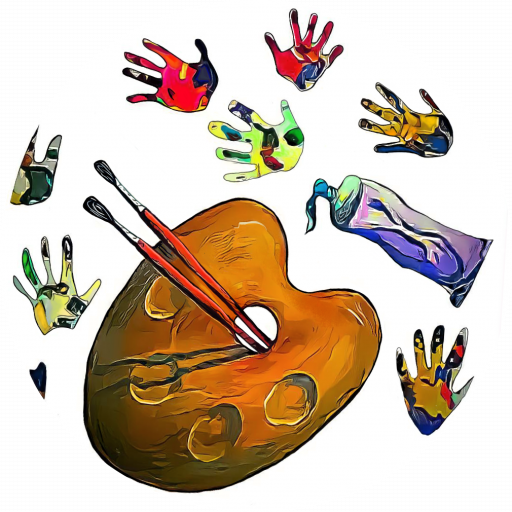
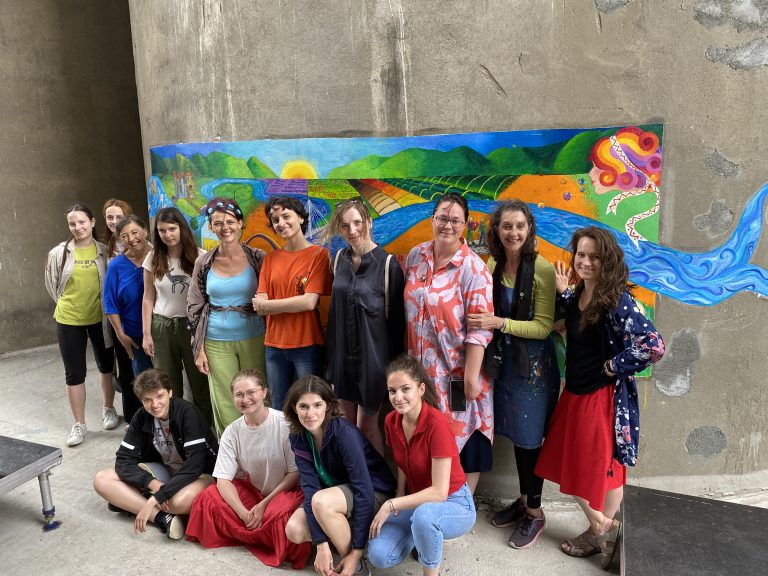
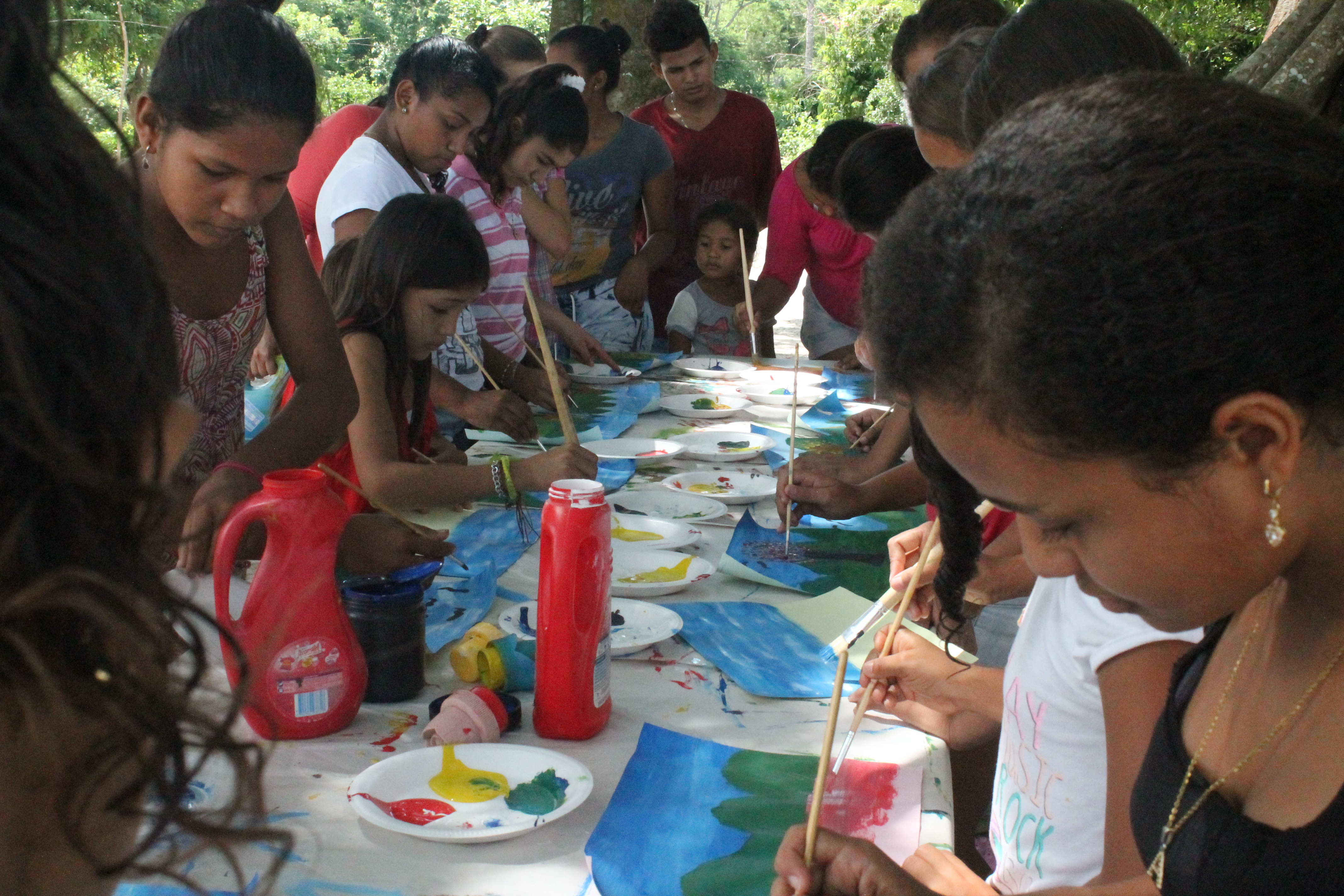
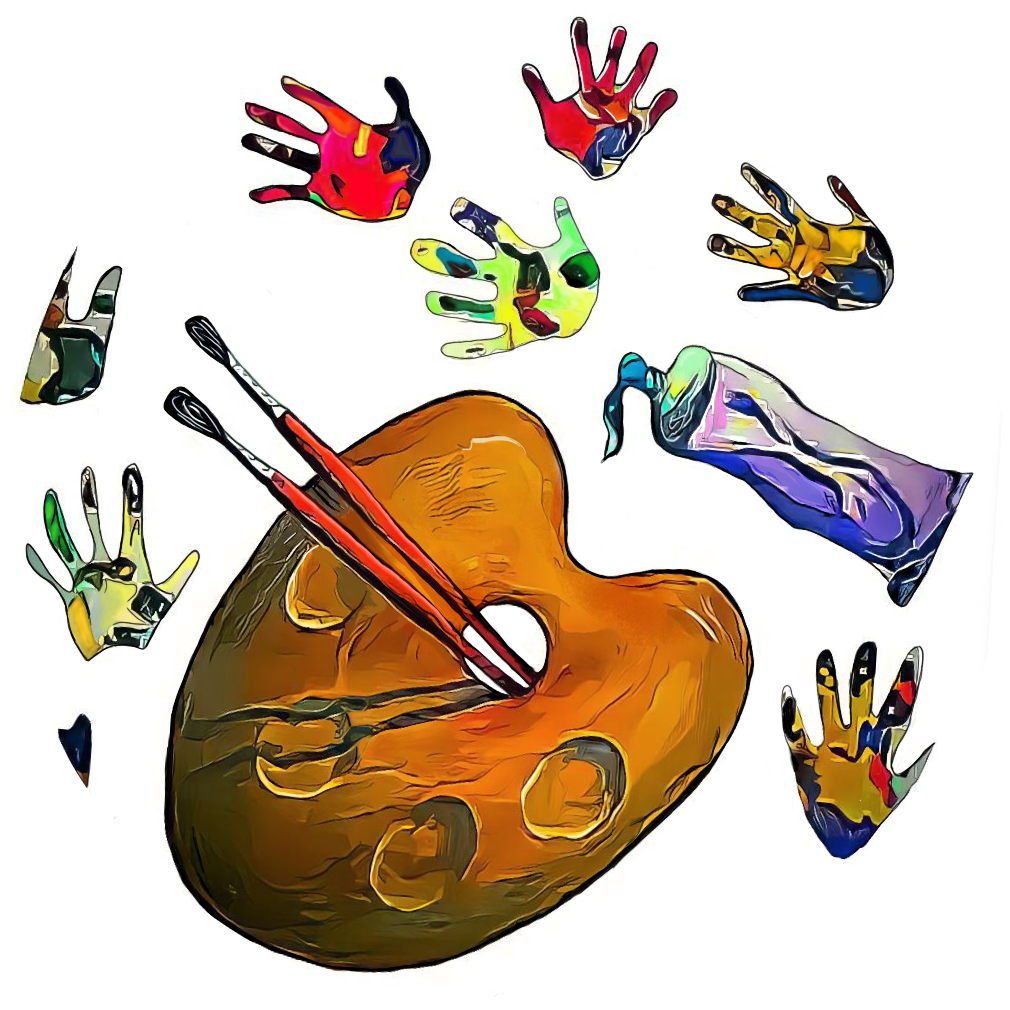
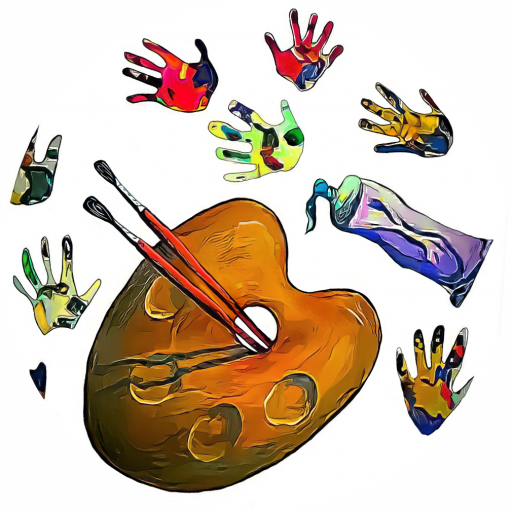
hello, i attended today september 13th the peresentation of a project in osnabrück/germany with claudia bernadi. i was deeply impressed by her lecture and thankful to have found your website right after. i am fluent in spnish so i spent the last two hours on this website, and just want to say that i thank you so much for the work that you are doing and also for the intensive documentation of it which gives other people the opportunity to be part of this improtant processes of healing arts. i have lived in the mission in san francisco u.s. and that was my first encounter with murals. this is more than 20 years ago. well i wish you all the best for the future and thanks again for this so much needed work that you have implemented. with kind regards angelika
Hola amigo ! Yo quiero deseo de decir que este artículo
es asombrosa , gran agradable escrito y vienen con infos .
que lo haría como ver extra posts como este.